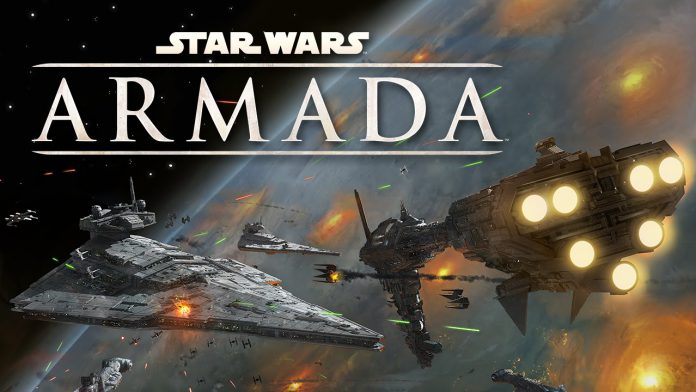The Rebel Alliance fields the largest selection of small ships in Armada, and has cemented itself as a definitive power in small unit gameplay. Welcome to Part I of Dockyard – Rebel Small Ships, an explainers article where I outline these ships.
Piranhas – “We have not surrendered, we do not concede the stars. We will win back our birthright.”
Playing Rebel small ships means having the largest pool of small strike craft of any faction. Multiple small unit (MSU) fleets built on a core of small ships are a mainstay for Rebel players. Your small ships cover every role, and can be used to support larger ships or run in devastating swarms. They also have multiple commanders tailor-made to benefit the bitey little bastards.
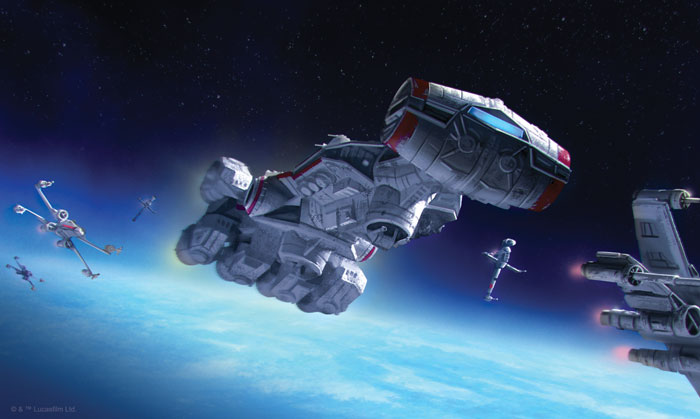
Next to their Imperial counterparts, Rebel ships edge ahead slightly in average HP, but this varies as their lightweight options are really lightweight. Expect worse shield values, superior mobility and lower average costs. Rebel ships often play well in groups, whereas the more durable and complex Imperial offerings can be a superb force on their own. Rebel small ships rely on Evade and Redirect tokens, and only two of them can Brace. Their lower average shields make the Redirect token more of a support option, leaving you with the vaunted Evade. This falls in line with their mobile playstyle, and you’d do well never to throw them directly into an enemy (Garel’s Honor aside). Your options for damage output are excellent, and cover every range bracket, but they seldom deliver massive strikes.
The primary strategic consideration for outfitting Rebel ships is deciding on how many you want, and how you plan to keep them alive. Some examples are comically frail, while the more durable picks will be drawing fire up close. There is no safe margin where you can have fantastic firepower and durability. In Armada, you trade risk for damage output, always. Unless you’re flying an Onager, but that’s a crime against common decency. The good news is that their diverse flying styles always leave you with options. The Corvette A is still the gold standard for a long-ranged skirmisher. The MC30c’s title selection is a lesson in absurd durability, and Hammerheads provide a frankly dirty amount of survivability for their price tag.
A summary of Rebel small ships looks like this:
- Best-in-class variety that fulfills any role
- High mobility and evasion-focused defenses
- Highly rewarding to calculated risks
- Can be sneezed apart if caught out of position
The Ships – “Call up a Hammerhead corvette. I have an idea.”
Piranhas. These are the piranhas I’m referring to. Hammerheads are by far the cheapest way to put five Hull point ships on the table. In fact, they’re the cheapest ship in the game that’s not a flotilla who are in a class of their own. Getting best-in-class HP as a cheapest-in-class ship is a great start. Follow that with a solid front arc of three dice, and good turning and you’ve got a little devil. Hammerheads come in a box of two and that tips you off to their usage: they fly best in groups and have titles that favor pack tactics to back it up. High durability and short-ish ranged weaponry favor close-combat. Hammerhead commanders bank on flanking attacks and interceptions against incoming enemy ships to deliver repeated attacks that wear down larger opponents. Although potent and cost-effective, they lack the raw damage output to kill targets solo and should be supported with follow-up attacks.
The default Hammerhead fit involves the cheaper Torpedo Corvette with External Racks. Their expansion introduced this mighty upgrade to the game and gave the small ship utterly disproportionate hitting power. Being able to add two black dice to a three-die front makes them worrisome to even the largest ships. Ships like this fly best in a cavalcade of pain, with the following ships being buffed by a cheap Task Force Organa or protected by Task Force Antilles. Officer selection is limited to Hondo Ohnaka or absolutely nothing. Hondo doesn’t actually do much for this specific ship, but if your fleet needs his ability, then this is a good ship as any other to carry him. The Rebels have few officers with one-shot abilities and Hammerheads are liable to die fast. While they certainly have upgrade slots, filling them all is a mistake as each point spent on upgrades reduces the value of their main perk: affordability.

This affordability issue is exactly why the Scout Corvette variant is less popular. While it has valid uses in a second-line role, turbolaser upgrades are very expensive. Options like Slaved Turrets, Linked Turbolaser Towers and Spinal Armament swiftly bump the price tag further. If you’re going to bring a Scout Corvette, slap something like Slaved Turrets on it and run it in a second-line role. Using their extended range, they can activate first to pelt an enemy, letting one of your Torpedo variants use it to trigger Task Force Organa. You won’t find a swarm of Scout Corvettes at the core of a competitive list, but there are still reasons to use it.
Another oddball role Hammerheads is deploying Boarding Teams. The problem is that Rebel unique boarding teams are kinda bad. They have three unique Boarding Teams that benefit from a cheap means of deployment. Shriv Suurgav is a vastly worse Darth Vader, but is the sole Rebel option for deleting key enemy upgrades. Jyn Erso’s raid ability can twist up an enemy carrier, but relies on diverting one of your ships to deploy her. This is a problem for a ship that wants to fly in a coordinated pack. Cham Syndulla might be the most useful of the lot, being a jacked up Slicer Tools. He’s still reliant on your opponent actually bringing a high command value ship for you to screw with, but scrambling an unprepared flagship might just turn the tide. I’m not saying these options are tournament winners (they aren’t), but you’d be missing out if you didn’t consider them.
On the overall, Hammerheads excel at one thing and that’s wolf pack tactics. Sum-is-greater-than-its-parts play using their Task Force titles and cheap cost give them a special place in Armada. No other hull is this spammable, nor does any other hull encourage spamming as much as the Hammerhead. The key is always to keep them cheap and aggressive.
The first ship ever seen by Star Wars audiences. Corellian Corvettes were the original spam list ship for Rebels before Hammerheads arrived to diversify the roster. They’re still the benchmark by which all other skirmishers are measured. The Corvette is blisteringly fast and maneuverable. It has a good starting battery that can be enhanced to worryingly high performance. It pairs beautifully with commanders focused on small ships. Two Evades and a balanced shield layout make it surprisingly difficult to kill at long range. Despite being a ship that launched with the game over half a decade ago, the CR90 is still an easy inclusion in Rebel lists as a support skirmisher, combat activation or objective attacker.
The most time-honored CR90 loadout is a Corvette A with Jaina’s Light and Turbolaser Reroute Circuits. The title is devastatingly powerful on a skirmisher that wants to safely line up shots at range, and the Turbolaser upgrade all-but guarantees you two damage on one attack per activation. Prior to the Turbolaser Reroute Circuits nerf (they used to have unlimited uses per round), a swarm of CR90s with this upgrade was the fast fish list that every Rebel player ran. Unlike conventional wisdom, the CR90 is a low-cost hull that benefits from having more upgrades. This is in contrast to the Hammerhead above. This is due to the ship’s survivability provided by Evades, range, and speed. The corvette is an obnoxious target to pin down at range, meaning that your upgrade investment is less likely to evaporate.
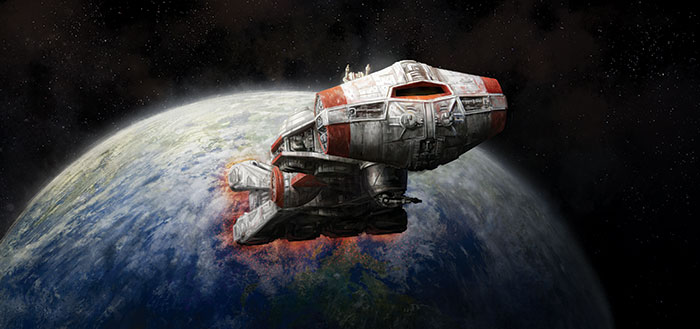
The Corvette B is cheaper, but suffers from all-blue main batteries that force it into medium-range. It still sees use as a medium-range flanker, and is the Alliance’s cheapest way to deliver Ion Cannon upgrades into combat, but it’s riskier to fly. In a General Dodonna fleet, Dodonna’s Pride lets you consistently nab the worst possible critical effect for major effect. Outside of that niche synergy, you’re taking the Corvette B for its Ion Cannon upgrade slot. There are numerous options for the slot, but they often run outrageously expensive or super niche. Viable picks include Ion Cannon Batteries and SW-7s. SW-7s guarantee damage out of every single blue die rolled – incomparable consistency. Ion Cannon Batteries are a dangerous support option that threaten a ship’s command tokens or grant bonus damage if there are no tokens left.
So Corvettes are capable skirmishers that rely on tuning their weapon upgrade slots for relevant firepower. What about the Defensive Retrofit and Officer slots? The Defensive Retrofit is easy. Leave it open unless you’re utterly certain of what you’re doing. People run Reinforced Blast Doors on ramming builds, or just to mitigate chip damage. There aren’t real arguments for the other options for cost-effectiveness reasons. CR90s do well with more upgrades, but you don’t have to weigh the ship down. The officer slot is much more competitive. The Rebels benefit from a wealth of support officers who build value over time. Fleet support officers generally don’t want to be on your heavyweights because they need someone who enhances that specific hull. Leia and Ahsoka’s abilities both benefit from your Corvette’s ability to keep pace with ships to use them. Ezra is incredibly niche, but can be a massive pain aboard Jaina’s Light. Jaina’s Light flies almost recklessly through terrain, and the ability to manipulate terrain to give yourself cover or damage enemy ships is incredibly fun. Lastly, Lando is an old standby aboard flagship CR90s to mitigate a potentially lethal attack. There isn’t a single mandatory officer for the CR90, which shows its flexibility and soothes your fleet point budget.
The CR90 was the definitive affordable combatant for Rebels all the way until Hammerheads showed up. Even so, no other skirmisher has ever toppled them – especially in numbers. This ship is notoriously comfortable to fly and surprisingly effective. Its lack of heavier firepower is mitigated by finding consistent firepower through Turbolaser Reroute Circuits or SW-7s. An easy inclusion in any Rebel fleet.
Here’s a rule of thumb for Armada. If a ship gets an incredibly powerful title card in a later release, it means you got power crept. This factoid bears no relation to the ship I’m about to discuss.
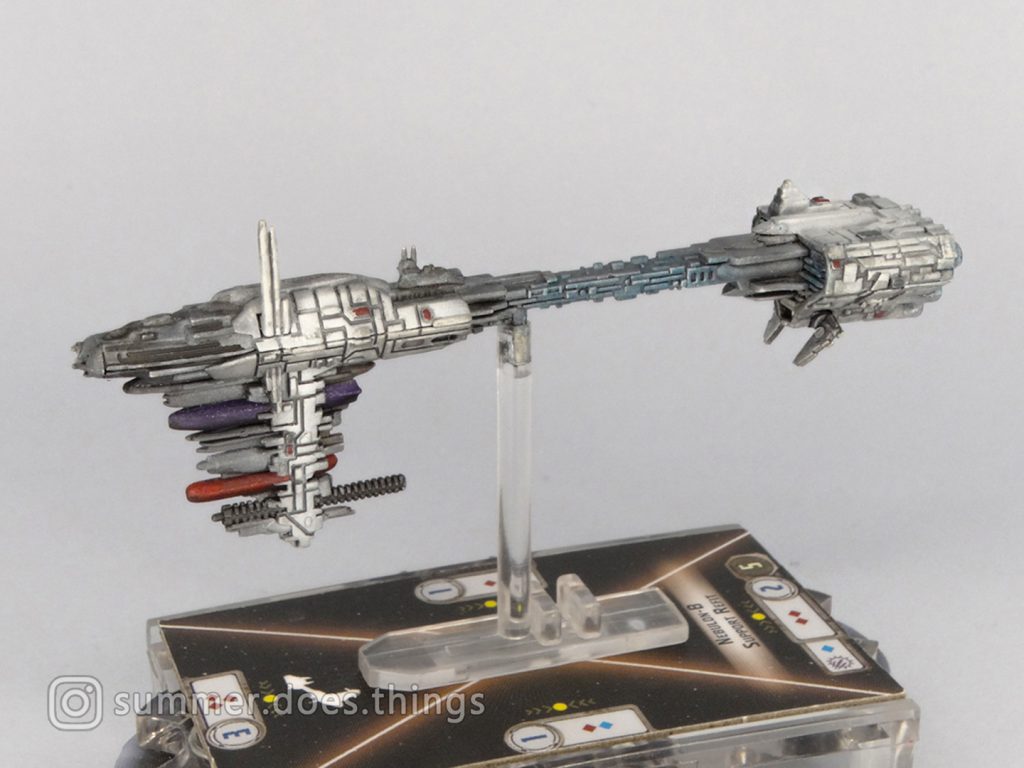
Anyway.
The Nebulon-B is the Weird Ship in the Rebel lineup. They’ve got a skirmisher, close assault, fleet support, and swarm hull covered. You need an odd duck that looks and plays weird. Well, the Nebulon is a ship with a strong, but extremely narrow front arc. Like a mega-discount Onager with none of the perks. It is made of paper, but benefits from a rare double Brace. It can pull a respectable Speed 3, which is a great way to die. When fitting this ship, there are two avenues: forward firepower and support.
Forward firepower builds ironically use the Support Refit variant. It’s cheaper and has the same battery stats, so why pay more? Take Salvation for the bonus damage and add Slaved Turrets to beef up the primary arc. This combo has a lot of damage built in, but needs a source of dice control. It has to be flown with extraordinary care – never faster than Speed 2 on the approach, and possibly slowing to Speed 1. The goal here is to focus on Navigate or Concentrate Fire commands to lead enemy ships into your front arc and hit them with blistering firepower. Ideally, you want to force an enemy ship into the unenviable position of running at the Nebulon-B to kill it (while making it easier for you to attack it), or continuing on its course while being pelted at range. It’s not as glamorous as a CR90 darting between the asteroids, but it can get the job done. Alternatively, the fantastic Vanguard title provides a secondary means of dice control by enabling access to Caitken and Shollan, but that’s paying 10 points for something most ships can get for cheaper. It’s regrettably difficult to fit a Nebulon-B for combat because the Rebels have such fantastic combatants elsewhere, but the option exists.
Support Nebulons, though. That’s where it’s at. The Nebulon-B was one of the main Rebel carriers before the roster ballooned in size. Pre-nerf Yavaris was a disgustingly powerful bomber support ship that effectively doubled the damage output of its squadrons. Despite a nerf, it remains potent. The Escort Refit is the default choice for carrier command owing to its larger Squadron value. Yavaris still has its place for making carefully picked squadrons hit hard. The ability favors bombers because the addition of a single anti-ship die to bombers can yield massive efficiency compared to adding one die to a pool of three for fighters. They don’t even have to be bombers, either. Hard-hitting squadrons like Lando Calrissian and Hera Syndulla can delete enemy fighters fast with the benefit of an extra die. The upgrade slots speak to a Flight Commander and Fighter Coordination Team, but the Flight Commander is arguably more important for triggering Yavaris at your convenience. If you think this looks like an awfully complicated way just to command two bombers, then you’re correct. But playing Rebels means putting up with fewer Squadron commands and no dedicated carriers. You have to improvise if you want to get the most from your squadrons – which seems appropriate for an insurgency.
I only suggested two builds for the Nebulon-B because frankly, it’s a ship for people who know what they’re doing with it and I don’t. This is not a newbie-friendly ship owing to its weird arcs and low durability. Combat-fitted Nebulons are mostly supplanted by other Rebel offerings, but Yavaris still props the hull up. The newer Vanguard title has also given fighting builds a new life by addressing its janky defense tokens and granting a Weapon Team slot. This opens up experimentation with Caitken and Shollan and Weapons Battery Techs. Used well, it’s a dark horse threat that can surprise people, and I think there’s inherent value to that.
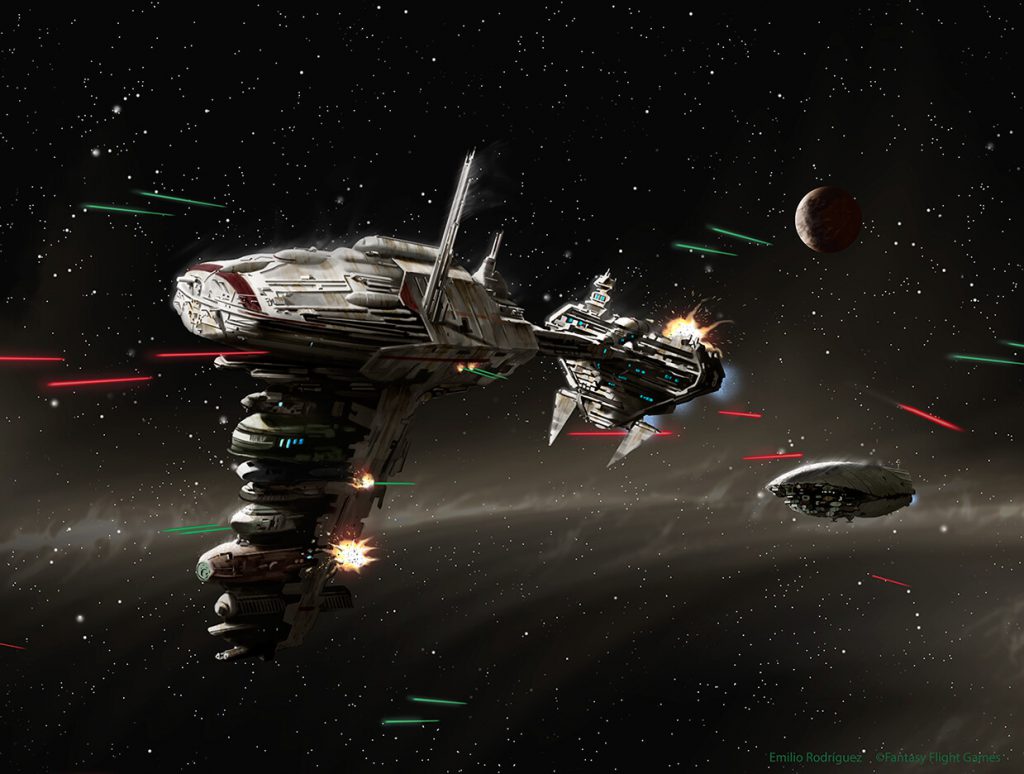
Considerations for Rebel Small Ships – “Beware of traps.”
Notable upgrades
Snips is the premier token manipulation officer for the Alliance. Once per round, any friendly ship within long range of her can swap out one of its command tokens for another one of choice. Token manipulation of this nature has awesome uses. Use her to fuel a fleet command under pressure. Switch to a Repair token so you can remove a major critical effect alongside a Repair dial. Clutch a Navigate token so that you can accelerate to escape, or decelerate to force an engagement. She’s most comfortable at the heart of a fleet where multiple ships can potentially benefit from her, and your opponent has to face the consequences. A lifesaver at 2 points.
Lando is the most-commonly used defensive officer on small Rebel ships. He’s priced competitively, as far as officers who can save your whole ship go. Small ships aren’t expected to weather repeated hits like a large cruiser, and their exposure to danger is often limited to one unfortunate round. In these kinds of situations, a powerful one-use defensive ability like Lando can save the vessel and let it dart around a target’s flanks or rear. Lando exemplifies this duty and is regularly seen on lightweight flagships like the CR90, or an MC30c that needs to survive the assault.
Jaina’s Light
It’s frankly remarkable that this title hasn’t been nerfed yet. Jaina’s Light makes your chosen CR90 (almost always an A variant) immune to damage from flying into space junk. It also ignores the effects of obstruction. They’re intended to allow captains to fly almost recklessly through debris and keep firing to their heart’s content, but the second rule does much more. The ability to ignore obstruction also ignores any special rule that would inflict obstruction on this ship. If the enemy fleet is led by General Cracken, Admiral Montferrat, this ship ignores their abilities. This ship is completely at home in Dangerous Territory, while lancing the enemy with firepower. It costs 2 points. Your first CR90 Corvette A should always be Jaina’s Light. That’s how it goes.
These are a keystone upgrade on CR90 Corvette A’s and also see excellent use on MC30c Scout Frigates. A guaranteed two points of damage (by setting the red die to its double-hit face) during your activation after spending an Evade token. Turbolaser Reroute Circuits bring order to the inherent chaos of red dice and are a superb pick on evasive ships.
You know ‘em. I love them. They came bundled with the Hammerhead expansion for a reason. External Racks are the favorite of any ship that wants to pump out a strong one-shot attack, but doesn’t want to invest aggressively in more upgrades. They’re disproportionately effective on the Hammerhead because they bump the tiny hull into medium-hitter territory during the one round that matters most. They also get their value on skirmish-fitted MC30c Scout Frigates that depend less on close-assault power, but are still looking for a finisher. I have six copies of this card and I kinda want more.
Conclusion – “How we choose to fight is just as important as what we fight for.”
This is the first of a two-parter. I’ll talk commander synergy and chunkier hulls in the next article. What you should be getting from this article is a basic understanding of the toolkit that Rebels have in their small ships. Both the CR90 and Hammerhead are used in numerous fleets for support, or as the core of a swarm fleet. Even the maligned Nebulon-B hasn’t completely lost its place as a carrier. A swarm of angry, bitey bastards led by a Rebel commander has always been a ferocious opponent.
Have any questions or feedback? Drop us a note in the comments below or email us at contact@goonhammer.com.
